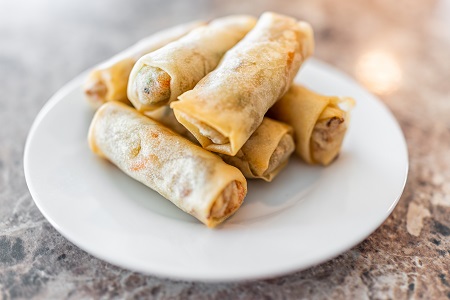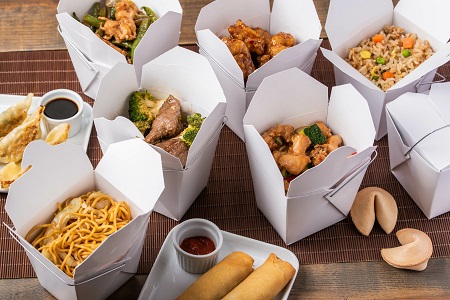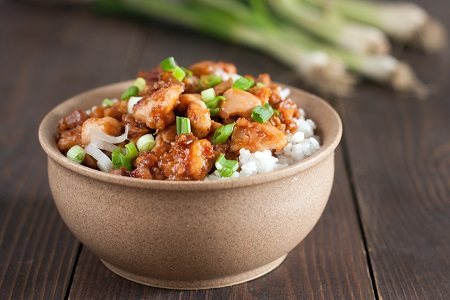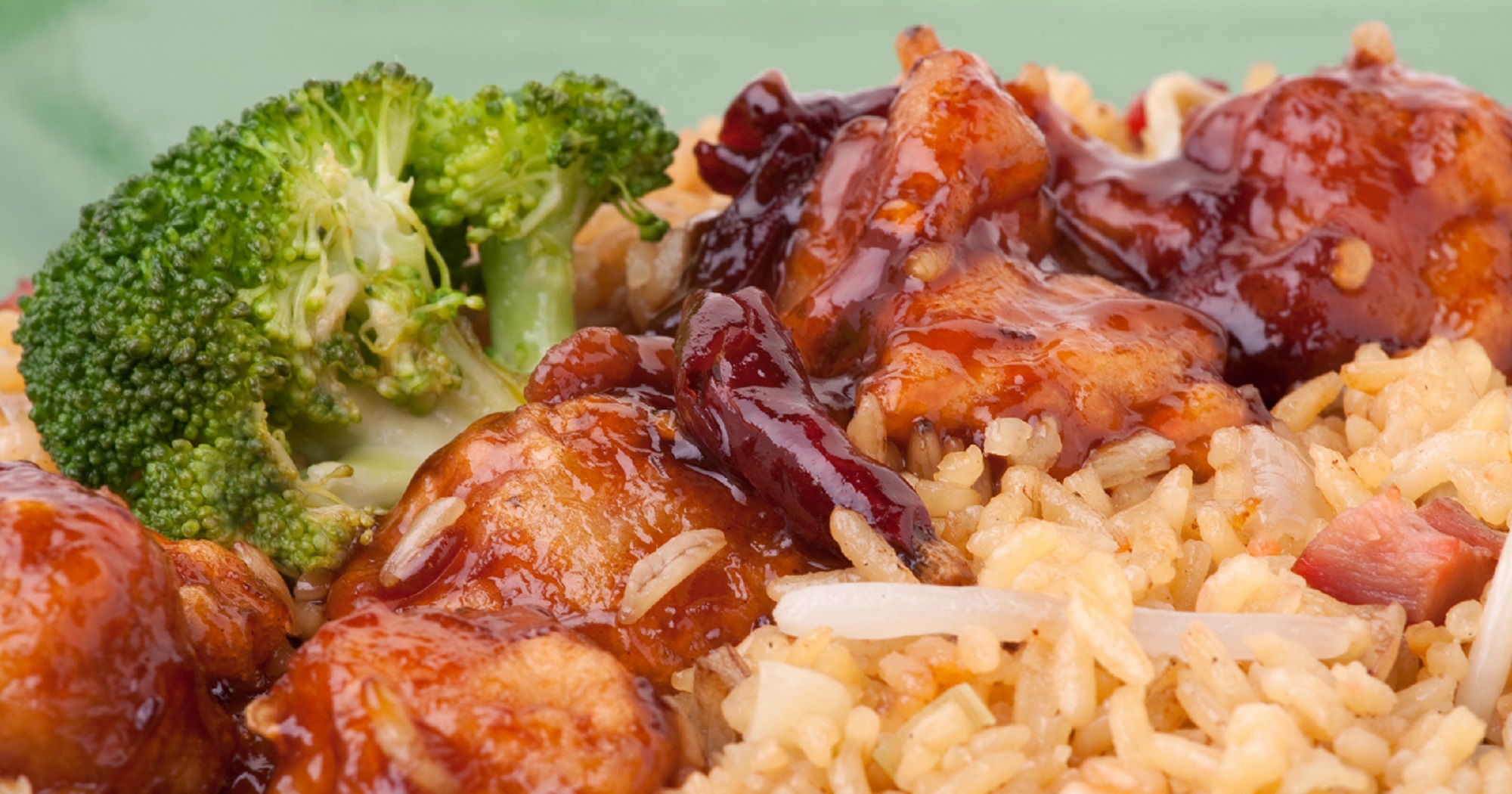On a chilly November morning in 1849, the Canton Restaurant opened in San Francisco to seat a clamoring crowd of 300. As the first Chinese restaurant in the United States, the menu would be almost unrecognizable. You wouldn’t find General Tso’s chicken or fortune cookies here. You wouldn’t even be able to carry it home in one of those classic oyster pail takeout boxes. But for a limited time, it was one of a kind.
Nowadays, Chinese restaurants are ubiquitous, and takeout has become the byword for comfort food. You see one in almost every town in America. Happy Panda is a mainstay for Chinese food in Beaverton, Oregon and surrounding areas. Our excellent menu continues the modern Chinese-American restaurant story.
From climbing early anti-immigration roadblocks to weaving through alternative cultures, the principal ambassador for Chinese Americans has been the restaurant. But the story behind Chinese-American restaurants is a twisty, shifty garden path. In our first blog post, we explore the roots of Chinese restaurants in America and how they became a go-to for the American diet.
The Original 49’ers

The history of Chinese restaurants in America can be traced to the United State’s largest gold rush in 1849. Still, during the gold rush, they arrived to provide plenty of other services. Eventually, Chinese immigrants were among many nationalities that were brought over to take part in building America’s railroad system.
Many neighborhoods would feature restaurants accompanied by a laundry service. This restaurant-laundry duo would form the backbone of the earliest Chinese-American communities. They were here to stay with the establishment of San Francisco’s famed Chinatown.
However, an overwhelming male supermajority formed within the early community. According to one statistic by Benson Tong, of the 2,954 Chinese living in San Francisco by 1852, only 19 were female. Furthermore, cooking was considered a task for women in Chinese culture. Finally, early Chinese arrivals came from Guangdong province and not much else. What resulted was a shortage of traditional recipes.
Those immigrants who did make the food had to make do with what was there. No mustard greens, kailan or shiitakes; peas, carrots, broccoli and white cap mushrooms became the mainstays of Chinese-American cooking. Rice was even a luxury, as expensive as tea or tobacco. However, even with these Americanized ingredients, the mainstream English protestant community was still not prepared to engage with a whole new culinary culture.
Use of the whole animal, accusations of dirty kitchens and “improper” ingredients were spread, and the perceived lower cost to hire Chinese workers, the public favored passed legislation to exclude and bar Chinese immigration to California. What resulted was the next phase of Chinese cuisine in America, as odds and ends soon became the backbone of what we know now.
Alternative Cuisine for Alternative Cultures
Due to the exclusion acts of 1882, a different clientele began to frequent Chinese restaurants—namely, other immigrants and minorities. But the earliest champions were the bohemian writers and intellectuals of New York’s Lower East Side during the early 20th century.
One of the earliest recipes that gained traction was chop suey. Although widely regarded as an American invention, chop suey is not an individual dish but a category of dishes cooked in the style of “chaos,” otherwise known to Americans as “stir-fry.” Famed physician Yang Buwei describes numerous varieties of stir-fry recipes for How to Cook and Eat in Chinese, published in 1945.
However, the popularity of Chinese restaurants for those artists and writers before the turn of the century had nothing to do with attaining an authentic experience. It was the availability of delicious food at reasonable prices away from the prying eyes of moralists that drew the crowds. The cultural exchange went into full swing at 63 cents a bowl.
By the turn of the century, over 100 noodle houses serving chop suey existed between Manhattan’s 14th and 45th Streets, from First to Eighth Avenue.
The Jewish-Chinese Connection

As New York City came to harbor one of the most vibrant communities of Chinese-Americans, so did it come to host another group of migrants, the Jewish-American community. However, the relationship would not be noticed in the press until 1899.
“The first mention of American Jews eating in a Chinese restaurant dates to 1899, when the American Hebrewjournal criticized Jews for eating at non-kosher restaurants,” Rabbi Joshua Plaut, author of A Kosher Christmas, explained to Vox.
The main attraction arose from Chinese restaurants not using dairy. As this information spread, more and more Jewish customers came to patronize the establishments. Nowadays, one can even find Chinese restaurants serving completely kosher menus. However, the biggest reason Chinese restaurants were such a hit in the Jewish community came from being the only restaurants open on Christmas day.
As both communities held no particular meaning to the day, they could choose what to do. For most Jewish families, it was just another day off. For Chinese families, it was another day to work. What happened next? Well, it could only happen in America!
Acculturating in America
Bolstered by the business of alternative clientele, Chinese-American cuisine would continue to survive and even thrive. Many of the items now considered iconic of the Chinese restaurant experience during this period were developed. Fortune cookies, the oyster pail takeout boxes, and the use of Lazy Susans defined the family-style eating experience. All of these were American inventions.
The takeout container? Patented in Chicago in 1894. The stylized pagoda was tacked on in 1970 by a graphic designer. The Lazy Susan? Fashioned by a Chinese-American engineer who owned a soy sauce company in California. The fortune cookie? Created in San Francisco by Makoto Hagiwara, who served the Japanese-inspired confections at his tea garden.
As writer Clarissa Wei explains, “Chinese restaurateurs were willing to experiment with new marketing methods and take calculated risks to attract diners—even if such methods had no connection to the mainland.”
And with authenticity being such a tricky subject in gastronomical circles, perhaps it is wiser to take a step back. There’s an argument to be made that Chinese restaurants served the first real fusion cuisine in America. A limited fusion, to be sure, but one nonetheless different and delicious.
Post-War Popularity For General Tso

The now thoroughly Americanized Chinese cuisine had become widely accepted across the country. During this time, factors outside the restaurant industry would provide an even more tremendous culinary explosion.
In 1952, the McCarran-Walter Immigration Act lifted restrictions on Asian immigration to the United States, allowing for a more significant number and diverse wave of immigrants. This was further bolstered by the Hart-Celler Act of 1965, which lifted all restrictions.
Soon cooks from Hong Kong and Taiwan were arriving to sell their craft using recipes inspired by traditional Sichuan, Hunan and Beijing meals. It was thanks to these immigrating chefs that the American culinary world was introduced to a new dish in 1956: “General Tso’s Chicken.”
Named for the military commander who led the Qing dynasty army during China’s deadliest civil war, the Taiping Rebellion, General Tso’s Chicken is iconic. Despite the popular legend, the general was not a chef as well. But it’s a clever use of history by its true restaurateur, Peng Chang-Kuei.
His recipe became so widespread that they were already making it when he came to America! However, it too was changed to American tastebuds, using cornstarch and sugar to sweeten the traditionally spicy, caustic dish. The modified dish, however, would come to represent Chinese food across all levels of American society. Henry Kissinger was even said to have a fondness for it.
Confirmation of mainstream acceptance came with Richard Nixon’s much-publicized trip to China when the President met with Chinese Premier Zhou Enlai to normalize relations with the country. The Chinese restaurant, by now, had become a staple of the American family diet.
Local Chinese Food: More Popular Than McDonald’s
What? That’s crazy, you might say. But it’s true! Almost 50,000 Chinese restaurants exist in America today. Each serves up great food for their communities. And while some eateries attempt to present a more authentic Chinese cuisine experience, there’s still plenty of appetite for classic Chinese food in Beaverton.
Happy Panda has been the home to signature dishes of Chinese food for American tastebuds since 1991. We offer great starter plates and even better combination meals fresh for eating in-house, at the office or home. Check out our menu for more!
Need to throw together a quick office celebration? Don’t fret; Happy Panda is ready to turn your coworkers or family into Happy Fandas! Lunch or dinner, Happy Panda delivers on orders of $70 or more, making them the perfect Chinese restaurant for large parties in Beaverton.

